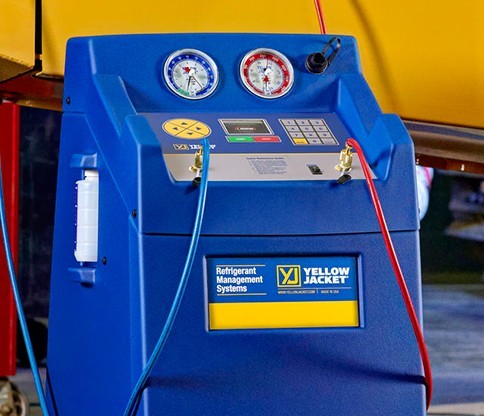 The global car market can broadly be categorized into two sub markets. One is market for new cars and the other is market for used cars. The car sales in the used car market are much higher than in the market for newer cars, solely because of one reason- economical prices. The used cars are economical in price and have many other benefits, like nil taxes, lower insurance premiums & costs and lower financing costs, associated with them. Therefore, buying a used car is many times consider a better option than a new car.
The global car market can broadly be categorized into two sub markets. One is market for new cars and the other is market for used cars. The car sales in the used car market are much higher than in the market for newer cars, solely because of one reason- economical prices. The used cars are economical in price and have many other benefits, like nil taxes, lower insurance premiums & costs and lower financing costs, associated with them. Therefore, buying a used car is many times consider a better option than a new car.
However, there are many risks that are involved in buying a used car. Hence, it is very important to put your thinking caps on while buying a used car. Else, you might loose on some of our precious time and money. Following are the tips you might keep in mind while buying a used car:
Research
IF you are buying a used car, it is important to do research. Make sure that you explore various options available. Participate in online auctions, join communities and search for reliable dealers on internet to get the best deal for your car. Doing this might take sometime but it will definitely reap good results for you.
Choose a reliable dealer only
Make sure you approach only a reliable dealer for buying a used car. The dealer might charge you with some overhead cost or commission but he will definitely save you from the risk of forgery or any kind of fraud.
Check the condition of the car closely
IT is very important to check the car’s condition before you buy it. For this, you can take the car out for a test drive. Make sure that the test drive is not too small to show you anything. Take the car to the highways and drive it a good speed. Doing this will allow you to check the condition of the engine as well as the tyres.
In addition, take a close look at the car’s exteriors as well as interiors. Check whether the accessories in the car are working properly.
Negotiate with the dealer
Negotiate as much as possible with the dealer. Try and get some cash or any other kind of incentive out of him. After all, you are a client so make best use of it.
The above mentioned tips can help you to buy the right used car at a right price.…
Categories
- Art & Entertaiment
- Auction Cars
- Auction Cars
- Auto
- Auto
- Auto Deal
- Auto Deal
- Auto Discount
- Auto Discount
- Auto Mobile
- Auto Mobile
- Auto24 De
- Auto24 De
- Automobile
- Automobile De Germany
- Automobile De Germany
- Automobile Deutschland
- Automobile Deutschland
- Automotive
- Bargain Cars
- Bargain Cars
- Business & Economic
- Business Product
- Business Service
- Car Auctions In Maryland
- Car Auctions In Maryland
- Car Auctions UK
- Car Auctions UK
- Car Book Value
- Car Book Value
- Car Specials
- Car Specials
- Cars
- Cheap
- Cheap Car Leasing
- Cheap Car Leasing
- Cheap Cars
- Cheap Cars
- Convertible
- Convertible
- Education & Science
- Fashion & Shopping
- Finance
- Food & Travel
- General Article
- Health
- Home
- Industry & Manufacture
- Inexpensive Cars
- Inexpensive Cars
- Law & Legal
- Military Auctions
- Military Auctions
- Mobile
- Mobile Auto
- Mobile Auto
- Parenting & Family
- Pet & Animal
- Real Estate & Construction
- Sport & Hobby
- Technology & SaaS
- Wholesale Cars
- Wholesale Cars
Recent Posts
- Modern Furniture Fresh Styles for Your Home
- Ford Fusion Hybrid Redefining Efficient Driving Solutions
- Reimagined Still Life New Takes on the Classic
- Toyota Corolla Hybrid Efficient Eco-Friendly Driving
- Unveiling the Nissan Leaf Electric Revolution Begins
- Quality Control The Future of Music Production
- The Ultimate Guide to the Best EV Models Available Today
- Smart Fixed Income Navigating Today’s Market
- Nissan Leaf Pioneering Electric Mobility for Modern Drivers
- Chevrolet Blazer EV Electrifying Performance Unleashed
- Unlock Your Potential Our New Value Proposition
- Streamlining HR with SAP’s Latest Updates
- Discover Efficiency Honda Insight’s Eco-Friendly Performance
- Experience the Future of Healthcare with Umb
- Electric SUVs with the Most Advanced Tech Features
- Eco-Friendly Adventure Chevrolet Equinox EV Unveiled
- Transparent Supply Chains Why Are They Essential Today?
- Audi Hybrid SUV Redefining Luxury with Eco-Friendly Power
- Hybrid SUVs Unleashed Power and Efficiency Combined
- Online Publishing Assistant Flexible Hours
